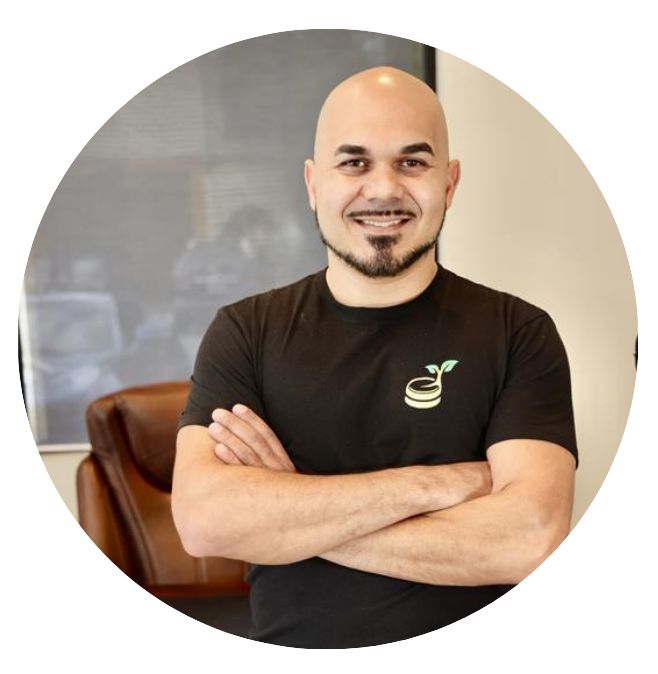Starting and growing a business often feels like a personal challenge - a test of grit, creativity, and determination. The idea of “doing it all yourself” carries undeniable appeal. There’s pride in bootstrapping, in finding a way to build something from nothing with just your resources. But while the narrative of bootstrapping is inspiring, it doesn’t always lead to the best outcomes for entrepreneurs.
Bootstrapping, at its core, means funding your business entirely with your resources, whether that’s personal savings, reinvested profits, or sheer ingenuity. On the other side is leveraging Other People’s Money (OPM) - a strategy of using external financing tools, like loans, investors, or lines of credit, to drive growth. While bootstrapping sounds noble, it often comes at a higher cost than most people realize. Smart entrepreneurs know how to balance their dreams with practicality, using OPM strategically to unlock growth and protect their businesses.
The Allure and Myth of Bootstrapping
It is hard to ignore the romanticized tale of the self-made entrepreneur. Countless success stories paint the picture of founders who started with nothing and clawed their way to the top without relying on outside help. This narrative creates a powerful pull to bootstrap, especially for first-time business owners.
Why Entrepreneurs Bootstrap
Many founders lean into bootstrapping for reasons that go beyond financial necessity.
- Control: Maintaining full decision-making power without answering to investors.
- Pride: The satisfaction of knowing you built something independently.
- Fear or lack of funding knowledge: A belief that funding is outside their reach or inherently risky.
When Bootstrapping Makes Sense
Bootstrapping isn’t always a bad strategy. It can be an effective approach in specific circumstances, such as:
- Testing a new product or service without committing significant resources.
- Refining business operations or product - market fit on a limited budget.
- Operating in a stable, slow-growth industry where small, incremental progress works.
However, what begins as resourcefulness can sometimes blind entrepreneurs to hidden pitfalls.
The Hidden Costs of Bootstrapping
Bootstrapping often feels like the “safe” choice, but it comes with challenges that can limit growth and strain the entrepreneur. Understanding these hidden costs is critical to making an informed decision.
- Slower Growth
Bootstrapped businesses frequently operate on tight budgets, meaning less investment in areas critical to scaling.
Limited marketing budgets stifle brand visibility and customer acquisition.
Hiring restrictions result in one person wearing too many hats.
Missed product development opportunities keep companies behind competitors.
This delayed progress can lead to missed market opportunities, especially in fast-paced industries where agility and speed can make or break success.
- Burnout and Resource Drain
Running a business without adequate support is exhausting.
Founders often experience financial strain, using personal savings or maxing out credit cards.
The emotional toll of constant overwork and stress can lead to burnout, reducing long-term productivity.
Overextending yourself to compensate for the lack of resources isn’t sustainable, and it often leads to diminishing returns.
- Lack of Leverage
Without funding, many entrepreneurs lack the capital to scale when opportunities arise. Meanwhile, better-funded competitors can capture market share faster, creating barriers to entry for smaller, bootstrapped companies.
- Missed Strategic Partnerships
Investors and strategic partners often prefer businesses that have already leveraged funding effectively, as it shows financial acumen and the potential for ROI. Bootstrapping too long can alienate these opportunities.
- Opportunity Costs
Perhaps the most underappreciated cost of bootstrapping is time. What could you have done with proper funding? Could you have launched a second product, hired a sales team, or invested in automation tools? Often, the answer is “yes”.
Why Smart Entrepreneurs Use OPM
Rather than viewing funding as a loss of control, it is time to reframe it as a strategic tool. Leveraging OPM doesn’t mean surrendering ownership or values - it means giving your business the runway it needs to grow.
Defining OPM
“Other People’s Money” encompasses a variety of funding options:
- Business loans: Traditional financing from banks or lenders.
- Lines of credit or business credit cards: Flexible capital for short - term needs.
- Investors: Equity funding in exchange for shared ownership.
Key Advantages of Using OPM
- Protecting personal assets by keeping business and personal finances separate.
- Accelerating growth with resources for better marketing, hiring, and production.
- Building business credit and a reputation for financial responsibility.
- Retaining ownership: Debt doesn’t dilute equity like investor funding does.
Financing isn’t just for large corporations - it is an accessible, scalable tool for businesses of all shapes and sizes.
Real Examples
Consider these two hypothetical cases:
The Bootstrapper: Sarah started an online retail business using her savings. With limited funds, she could only afford basic inventory and small - scale marketing. Three years later, Sarah’s revenue is steady but modest, and competitors have significantly outpaced her with better branding and product lines.
The Funded Founder: John launched a similar business but secured a small business loan up front. Using OPM, he quickly scaled his operations, invested in professional digital marketing, and developed multiple product categories. Not only is John’s revenue higher, but he’s now positioned as an industry leader.
How to Leverage OPM the Smart Way
For entrepreneurs ready to explore funding options, here’s how to do it wisely:
- Build and separate business credit: Avoid mixing personal and business finances to establish a solid credit foundation.
- Use ROI - based funding: Only borrow money with a clear plan to reinvest in high - growth opportunities.
- Explore 0% APR credit strategies: Some offers provide interest - free periods, making short - term borrowing more affordable.
- Work with professionals: Accountants, financiers, or consultants can help identify and secure the best funding solutions for your business.
By employing smart funding practices, you turn debt into an asset that drives growth rather than a liability to fear.
Overcoming the Fear of Debt or Losing Control
One of the biggest mental hurdles entrepreneurs face is reframing debt. Instead of seeing it as a burden, it helps to view debt as a resource that can be strategically used to advance your business goals.
It's important to understand the distinction between bad debt, such as borrowing without a clear plan or return, and strategic capital, where funding is directly tied to initiatives with a proven ROI. This clarity allows you to make more confident, informed decisions about when and how to use outside financing. If maintaining control is a priority, you can also explore funding solutions that don’t dilute your equity, such as certain types of loans or business credit options.
When approached thoughtfully and with a clear strategy, leveraging OPM empowers entrepreneurs to grow without compromising their vision or control.
Conclusion
Bootstrapping isn’t inherently wrong - it is a strategy. But in many cases, it limits not only your business's growth but also your personal well-being. Successful entrepreneurs weigh both the risks and benefits of bootstrapping vs. leveraging OPM, choosing the path that aligns with their goals.
Are you holding back your business out of fear? It is time to evaluate your funding options.
Prequalify today and discover how much OPM you can leverage without touching personal credit.
 About the Author:
About the Author:
Ari Page is the Founder and CEO of Fund&Grow, helping entrepreneurs, investors, and small business owners secure up to $250,000 in 0% interest business credit cards. Since 2007, he has grown Fund&Grow into an Inc. 5000 company, securing nearly $2 billion in business credit cards for thousands of clients. With 6,000+ 4.9-star reviews and an A+ BBB rating, Fund&Grow is a trusted leader in business funding. Ari is also the author of Fund&Grow: Easy & Affordable Ways to Get Money for Your Business and a passionate advocate for mindset, success, and the Law of Attraction. He lives in Spring Hill, FL, inspiring others to grow their businesses and achieve financial freedom.
Popular Posts
Instantly Pre-Qualify
Want Actionable Information, Tools and Resources To Quickly Acquire Business Capital, Credit and Funding?
I take tremendous pride in building positive and lasting relationships in my businesses and personal life. Every member of my team is committed to helping our clients get the maximum amount of funding possible and achieve their highest growth potential.



 Share
Share









